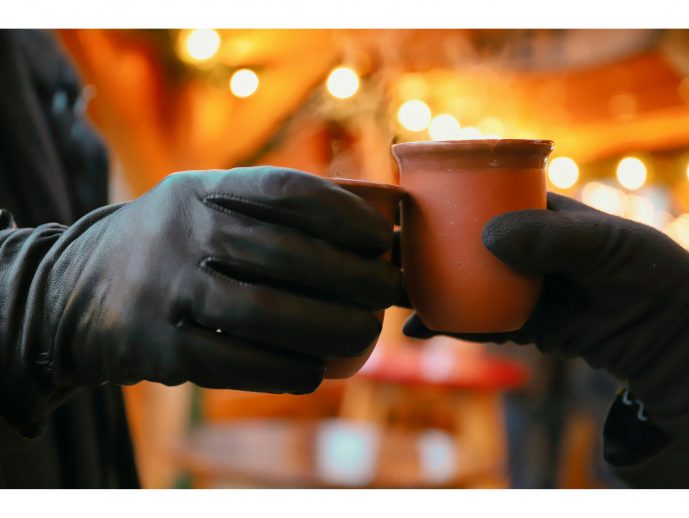Categories more
- Adventures (17)
- Arts / Collectables (15)
- Automotive (37)
- Aviation (11)
- Bath, Body, & Health (77)
- Children (6)
- Cigars / Spirits (32)
- Cuisine (16)
- Design/Architecture (22)
- Electronics (13)
- Entertainment (4)
- Event Planning (5)
- Fashion (46)
- Finance (9)
- Gifts / Misc (6)
- Home Decor (45)
- Jewelry (41)
- Pets (3)
- Philanthropy (1)
- Real Estate (16)
- Services (23)
- Sports / Golf (14)
- Vacation / Travel (60)
- Watches / Pens (15)
- Wines / Vines (24)
- Yachting / Boating (17)
From Ancient Times to Today: Why Is Mead Not More Popular?
Published
10/16/2025Mead, often referred to as the "nectar of the gods," is one of the oldest alcoholic beverages known to humanity. Would you believe something thousands of years old is hardly used by anyone today? Since mead comes with incredible history and a wide range of tastes, why isn't it a bigger hit with more people? Let's uncover the reasons.
Historical Significance
Mead's roots run deep in ancient cultures. Civilizations like the Greeks, Egyptians, and Vikings cherished this honey-based drink. Imagine their gatherings: mead flowed freely, not just quenching thirst, but loudly proclaiming someone's importance and commencing a joyous feast. It held a significant spot in their ceremonies and celebrations. People often tied it directly to their gods and old stories. Despite this illustrious past, mead gradually lost its prominence, overshadowed by other alcoholic drinks. To understand why is mead not more popular today, here’s a detailed rundown.
Production Challenges
One reason for mead's limited popularity is the complexity involved in its production. Unlike beer and wine, which have become industrialized, mead requires more attention to detail. The fermentation process hinges on honey quality, which can vary significantly. This variability affects taste and consistency, making large-scale production challenging. Additionally, honey is more expensive than grains or grapes, leading to higher costs that can deter potential consumers.
Flavor Diversity
Mead tastes vary a lot, from sweet to dry. You can also add countless things to give it a fresh flavor. Fruits, spices, and herbs can all be incorporated. However, this diversity can be a double-edged sword. While some appreciate the variety, others may find it overwhelming. Consumers unfamiliar with mead might struggle to find a starting point, leading them to default to more familiar drinks.
Marketing and Perception
Another factor affecting mead's popularity is its marketing and public perception. Mead is often associated with medieval times or fantasy settings, which might not resonate with everyone. The lack of mainstream marketing means many people remain unaware of mead's existence. You've probably noticed how many beer and wine companies advertise. All those commercials and billboards really make their products stand out in stores.
Craft Beverage Movement
Thanks to all the new craft beverages popping up, Mead lovers finally see a bright spot. Discerning drinkers, looking for authentic, thoughtfully made beverages, are now turning their attention to mead. Brewers and distillers are cooking up fresh flavors and methods, helping more people learn about mead. Yet, despite these efforts, mead still lags behind other craft beverages in terms of consumer interest.
Cultural Shifts
Cultural preferences have also contributed to mead's limited reach. In regions where beer and wine dominate, mead must compete with deeply ingrained traditions. You know how some drinks just show up at every party? These are those, making other choices seem invisible. Transforming these habits requires patience and steady work.
Potential for Growth
Despite the challenges, mead holds growth potential. With increasing interest in sustainable and locally sourced products, mead aligns well with these values. Honey sales keep beekeepers in business. Their work with bees is essential for a healthy environment. Focusing on these aspects will naturally bring in shoppers who care about the planet.
Educational Efforts
Educating the public about mead is crucial for increasing its popularity. Folks discover mead's appeal at tasting events, big festivals, or hands-on workshops. Imagine learning all about this ancient drink's fascinating past and how it came to be. You'd likely feel excited to give it a taste yourself.
The Bottom Line
From ancient days to today, Mead's story narrates old ways of meeting new difficulties. It's still for a select group, but more people are getting curious. Overcoming production hurdles, shifting perceptions, and embracing the craft beverage movement could help mead find its place in the modern market. As awareness and appreciation grow, mead may yet carve out a more significant role in our drinking culture.















